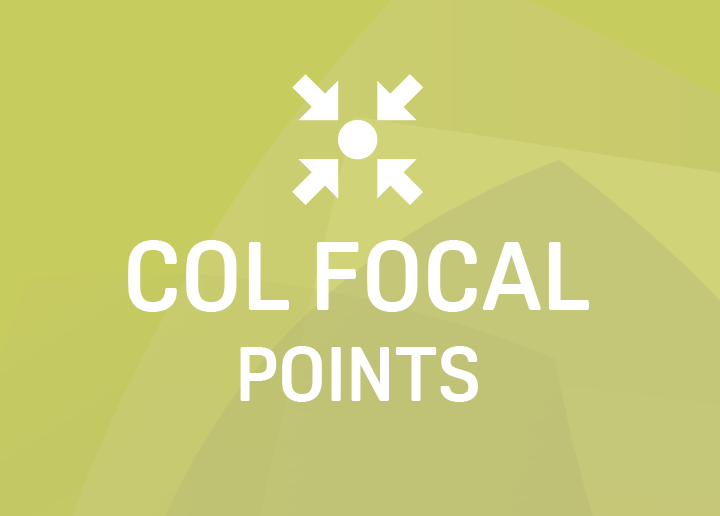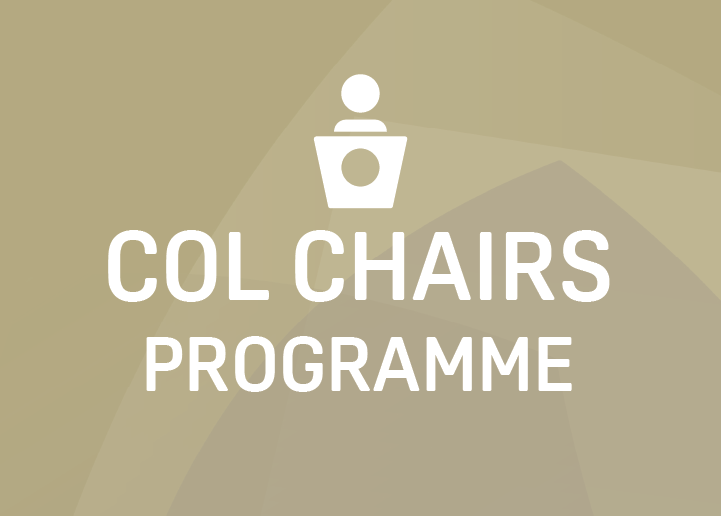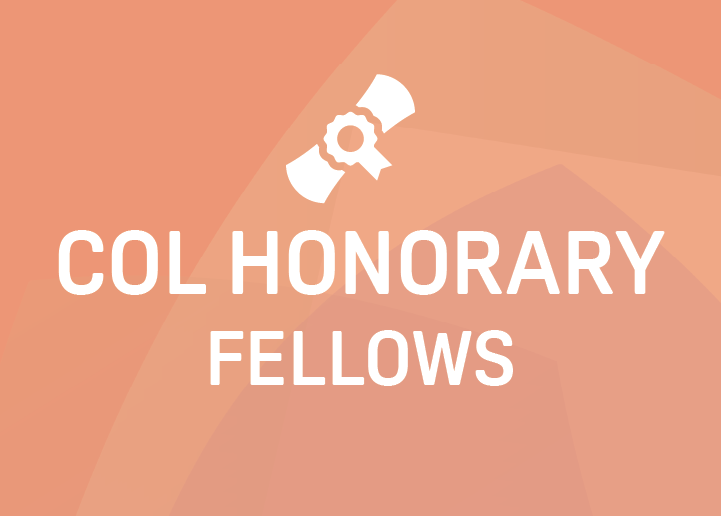The Commonwealth Charter (2016) states:
“… gender equality and women’s empowerment are essential components of human development and basic human rights. The advancement of women’s rights and the education of girls are critical preconditions for effective and sustainable development.”
These values reflect the Commonwealth priorities of equality1 between girls/women and boys/men. As a Commonwealth intergovernmental organisation, that promotes learning for sustainable development, it commits itself to striving for the attainment of gender equality through its policies, organisational processes and programmes.
- For COL, gender equality is a cross-cutting corporate goal which requires that both girl’s/women’s and boy’s/men’s views, interests and needs shape its programmes and organisational policies and processes. COL recognises that the advancement of the goals of gender equality and women’s empowerment are central to its agenda of learning for sustainable development.
- Gender is a complex category that intersects with class, caste, religion, race, ethnicity, sexual identity and other variables. COL appreciates that there is a diversity of regional and national experience with respect to achieving gender equality across the Commonwealth.
- COL has adopted gender mainstreaming as an organisational strategy to ensure that gender equality is considered an integral part of all COL’s policies and programmes. This implies that interventions are analysed from a gender perspective and the implications of how these impact on girls/women and boys/men before decisions are made. It is more than adding a “women’s component” or even a “gender equality component” into an existing initiative, activity or organisational process. Mainstreaming goes beyond increasing girl’s/women’s participation; it means that the experience, knowledge and interests of girls/women and boys/men are central to COL’s development agenda.
- For COL, mainstreaming involves:
i. Developing ourselves as a learning organisation with an understanding of the importance of gender and sustainable development and how that can transform unequal social relations and empower girls/women and boys/men where they are most disadvantaged;
ii. Reaching shared understandings internally and with stakeholders about how far and in what ways gender equality is important to the results that the organisation wishes to achieve;
iii. Selecting partners and consultants with the necessary competencies in the area of gender and sustainable development;
iv. Promoting the sustainable development of policies, plans and applications of technology to empower both girls/women and boys/men;
v. Planning events in ways that allow gender issues to be appropriately addressed; and
vi. Monitoring and evaluating the results of the organisation’s interventions and those of its partners and consultants from a gender perspective at all stages in the programme cycle by identifying gender indicators and encouraging partners to undertake the same.
- This policy provides the guidelines to promote and inform a gender perspective at COL. It reflects the commitment that gender equality and women’s empowerment are not only goals in their own right but also critical to achieving other development goals. The objective of this policy is to ensure that COL’s interventions and actions contribute to gender equality and women’s empowerment and is linked to a Gender Action Plan which specifies how this policy will be implemented and integrated both at the organisational and programme levels.
Organisational Processes
- COL is an organisation where girls/women and boys/men are given equal opportunities and where individual competence is valued and intercultural diversity respected. Therefore, COL shall:
i. Establish an Internal Gender Committee to guide its programmes and organisational processes in pursuance of this policy.
ii. Advocate a gender balance among staff, contracted consultants/advisors and other persons recruited by COL.
iii. Implement a gender capacity development strategy to improve the staff’s understanding of gender concepts, gender equality issues and current debates on gender and development with a view to promoting gender equality in all COL initiatives and activities; and enhance the skills of staff to integrate concrete gender-related activities into their programme of work.
iv. Integrate gender equality considerations into external communication strategies and ensure that all publications and information materials use gender-inclusive language.
v. Be inclusive in all its activities, and this will include, wherever feasible, the inclusion and protection of the rights of persons who identify as LGBTI. Further, all instances where COL staff engage with partners including LGBTI persons, COL will proceed with utmost caution in regards to the collection of data, and to protect and secure such data collected. No such data will be collected or shared without the consent of the participating individual/s.
Programmes
- As COL’s strategic plan is located within the framework of the UN Sustainable Development Goals (SDGs), the organisation shall strive to contribute to the achievement of gender equality and women’s empowerment (SDG 5). A gender equality perspective shall be promoted at all stages of the programme cycle (planning, implementation, monitoring and evaluation) to ensure that the initiatives offer equal opportunities, benefits and participation to girls/women and boys/men.
- COL’s programmes will focus the organisation’s efforts on:
i. Harnessing the potential of open, distance and technology-enabled learning techniques to expand access to quality education and lifelong learning for all.
ii. Providing skills training for livelihoods and ensuring that girls/women and boys/men are ready for employment and entrepreneurship.
iii. Encouraging more girls/women to participate not just as efficient users of technology applications but also to be active producers of digital content and tools.
iv. Ensuring that gender equality is at the core of all its interventions to promote equitable and sustainable human development across all Commonwealth nations by promoting the development of gender inclusive policies, systems, models and materials as crucial outcomes of all initiatives.
v. Encouraging Focal Points and partners to identify and develop specific initiatives for gender- focused capacity building in order to lead and sustain the gender and development agenda within Member States.
vi. Integrating a gender analysis clause (e.g. the collection of sex disaggregated data, impact analysis, etc.) into all internal programme-related documents and organisational processes.
vii. Promoting a quantitative and qualitative gender balance among the participants invited to conferences, workshops and meetings organised by COL.
viii. Promoting partnerships with other organisations to undertake research, identifying emerging issues and best practices in gender and ODL (including ICTs), and disseminating this information to the organisation’s stakeholders.
Glossary
- Gender is an overarching and fundamental variable which intersects with all other cross- cutting variables such as race, class, age, ethnicity, sexual orientation, religion, disability and locality. Gender systems are rooted in different socio-economic contexts which determine what is expected, allowed and valued in a woman/man and girl/boy in these specific contexts. Gender roles are learned through socialisation processes; they are not fixed but are changeable. Perspectives on gender are institutionalised through educational, political and economic systems; through legislation; and through culture, religion and traditions4.
- Gender Analysis is a systematic way of looking at the different impacts of development, policies, programmes and legislation on women and men that entails, first and foremost, collecting sex-disaggregated data and gender-sensitive information about the population concerned. Gender analysis can also include the examination of the multiple ways in which women and men, as social actors, engage in strategies to transform existing roles, relationships, and processes in their own interest and in the interest of others5.
- Gender and development (GAD) The Women in Development (WID) approach was the first contemporary movement to specifically integrate women in the broader development agenda and acted as the precursor to the Women and Development (WAD), and ultimately, the Gender and Development approach(GAD).The Gender and Development (GAD) approach focuses on the socially constructed differences between men and women, the need to challenge existing gender roles and relations, and the creation and effects of class differences on development. It focusses on social, economic, political and cultural forces that determine how women and men participate in, benefit from, and control project resources and activities differently. This approach shifts the focus from women as a group to the socially determined relations between men and women6.
- Gender balance is primarily a human resource issue. It is about the equal participation of women and men in all areas of work (international and national staff at all levels, including at senior positions, and among consultants) and in programmes that COL and its partners initiate or support. Achieving a balance in staffing patterns and creating a work environment that is conducive to a diverse workforce improves the overall effectiveness of our policies and programmes and will enhance our partners’ capacity to better serve the entire population7.
- Gender equality relates to the equal rights, responsibilities and opportunities of women and men, girls and boys. Equality does not mean that women and men will become the same, but that individuals’ rights, responsibilities and opportunities will not depend on whether they are born male or female. Gender equality implies that the interests, needs and priorities of both men and women are taken into consideration, recognising the diversity of different groups of women and men. Equality between women and men is seen both as a human rights issue and as a precondition for, and indicator of, sustainable people-centred development8.
- Gender equity goes further than equality of opportunity to look at outcomes. Treating women and men, or girls and boys, equally does not automatically ensure that they obtain equal outcomes and benefits, since there are many structural factors that may mitigate against this. Work towards gender equity therefore looks at structural power relations in society as well as material resources and may include taking positive or affirmative action to ensure that policies and programmes benefit women/girls and men/boys equally9.
- Gender Inclusive Language: Using gender-inclusive language means speaking and writing in a way that does not discriminate against a particular sex, social gender or gender identity, and does not perpetuate gender stereotypes. Given the key role of language in shaping cultural and social attitudes, using gender-inclusive language is a powerful way to promote gender equality and eradicate gender bias. Inclusivity10, in its very definition, means to be open to everyone, and not limited to certain people. From a gender standpoint, this means that these services, establishments, schools, practitioners, government agencies, etc. are all welcoming of all kids, regardless of their Gender identity and/or expression.
- Mainstreaming a gender perspective is the process of assessing the implications for women and men of any planned action, including legislation, policies or programmes, in any area and at all levels. It is a strategy for making the concerns and experiences of women as well as of men an integral part of the design, implementation, monitoring and evaluation of policies and programmes in all political, economic and societal spheres, so that women and men benefit equally, and inequality is not perpetuated. The ultimate goal of mainstreaming is to achieve gender equality.
- Sex traditionally refers to the physiological and biological characteristics which are used to define and differentiate humans as either female, male or third sex/gender.
- LGBTI: Lesbian, Gay, Bisexual, Transgender, and Intersex. An umbrella term, used to refer to the community as a whole.
References
- See the attached glossary for definitions of gender, sex, mainstreaming, gender equality, gender equity, gender balance, gender analysis and gender and development.
- Gender equality includes both quantitative and qualitative aspects. The quantitative aspect concerns the physical gender balance in numerical terms; the qualitative perspective focuses on the equal distribution of power between men and women. For COL, this translates into ensuring that not only are there an equal number of men and women invited to meetings, etc. but that the level of participation is equal, for example, women and men in senior positions are invited and all levels are represented.
- Source: Policy in Development Cooperation: Promoting Gender Equality, Swedish International Development Cooperation Agency, pg. 4-5: www.sida.se
- Source: Gender Equality: Glossary of Gender-related Terms and Concepts, UNICEF: click here
- Source: ibid.
- Source: United Nations Office for the Coordination of Humanitarian Affairs (OHCA), IASC (Inter-Agency Standing Committee) Gender Handbook, pg. 12: click here
- Source: The Commonwealth Plan of Action for Gender Equality 2005 – 2015, pg. 18: www.thecommonwealth.org
- Source: ibid.
- Source: https://www.un.org/en/gender-inclusive-language/
- Source: https://www.genderspectrum.org/blog/what-we-mean-by-gender-inclusive/
Issue Date: April 2007
Revised Date: August 2019
Revised Date: May 2021





